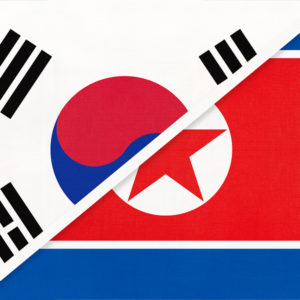The search for peace and reconciliation between North and South Korea burns bright in one province of South Korea that endured far more suffering than other regions before the Korean War had even begun.
The rest of the world is unaware of what happened on the island of Jeju, but a movement led by Ko Chang-hoon of Jeju University offers reminders of the slaughter that raged from April 3, 1948, at least until the outbreak of the Korean War in June 1950. Ko has been organizing panel discussions and debates that not only publicize Jeju as a “world peace island,” but also foster dreams of Jeju’s own special dialog with North Korea.
The ultimate dream, as one participant in the discussion, Grant McCall, an anthropologist at Sydney University, articulates it, is for cruise ships from Jeju to go regularly to Wonsan, the port on North Korea’s southeastern coast, bearing COVIDS-19 vaccines and medical equipment, among other items direly needed by the North Koreans.
Why Wonsan? Kim Jong Un hopes to turn the Wonsan region, famed for its beaches and scenery, just an hour north of Mount Geumgang, North Korea’s prime tourist attraction, into a major resort. Since Jeju, with its own beautiful beaches and rocky coastline, dominated by Mount Halla, ranks as South Korea’s top tourist attraction, why not a special Jeju-Wonsan relationship with ships carrying people as well as medicine?
Inevitably the dream fades amid the realities of politics and COVID19. North Korea remains closed to visitors during the pandemic, though the North steadfastly refuses to acknowledge that any of its citizens have died or even been stricken by the disease. Also, sanctions imposed by the United Nations and the U.S., adhered to by South Korea, rule out such exchanges for now.
Then too, equally problematic, South Korea stopped tourists from visiting Geumgang in July 2008 after a middle-aged South Korean woman was shot and killed by a North Korean soldier when she wandered outside the tourist zone to look at the sunrise.
A liberal president, Moon Jae-in, now governs the South while the conservative Lee Myung-bak, who issued the order banning tourism to Geumgang, languishes in prison, having been convicted of massive corruption. As long as North Korea remains essentially closed, however, there’s no chance of tourism resuming to Geumgang and therefore no way for cruise ships to be going to Wonsan.
Nonetheless, the dream does not have to die.
The notion of a cruise taking tourists from Jeju to Wonsan, then to Geumgang and back to Jeju, is so alluring you have to believe that on some distant day, if North and South Korea patch up differences, tourism will revive. It’s not inconceivable that Kim Jong-un, so worried about the economy, may see the advantages of giving the impression he might tone down his nuclear-missile program or at least guarantee not to test them.
If cruises between Jeju and Wonsan are for now more the stuff of fantasy than reality, Ko Chang-hoon wants the world to know what happened on Jeju that led to the deaths of 30,000 people. His panel discussions often revolve around the need to grasp the full extent of the massacres that began in the last few months of U.S. military occupation of South Korea and worsened after the rise to power on August 15, 1948, of Lee Syngman, the first president of the fledgling Republic of Korea.
Some participants in these discussions believe the U.S. owes “reparations” for the deaths on Jeju since the U.S. command ordered reinforcements to stamp out the revolt.
It’s easy to imagine the Americans saying the rebels were all Communists influenced by North Korea and urging their South Korean “friends” to wipe them out. But there’s no documentary evidence to verify that assumption, no transcripts of conversations between U.S. and South Korean officers. Nor did any reporters go to Jeju to check the reports they may have been hearing from their sources.
Unfortunately, however, tourists today remain largely uninterested in going on a “dark tour” to sites of massacres or visiting the Jeju Museum of War History and Peace, depicting dramatic scenes of mass killing. Whenever I visited, the museum was mostly empty.
Still, even if tours between Jeju and Wonsan are for now a figment of wishful thinking, Ko performs a service by increasing awareness of the legacy and tragedy of Jeju, an “island of peace” in a region under the constant threat of war.

